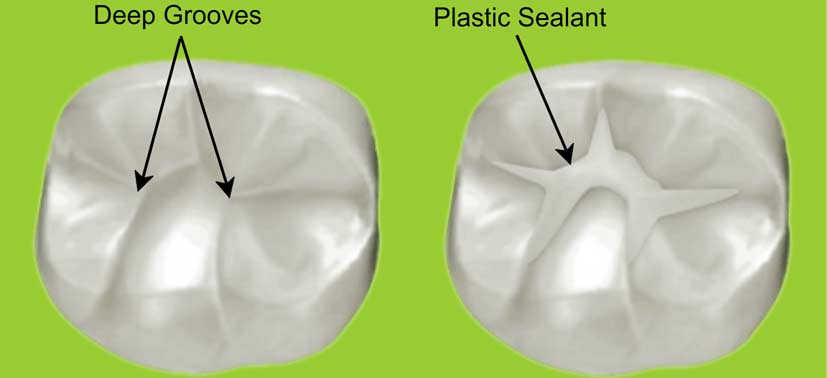What are sealants?
Tooth sealants refer to a plastic which bonds into the grooves of the chewing surface of a tooth as a means of helping to prevent the formation of tooth decay.
How do sealants work?
In many cases, it is near impossible for children to clean the tiny deep and narrow grooves on the chewing surface of their teeth. When a sealant is applied, the surface of the tooth is somewhat flatter and smoother. There are no longer any places on the chewing part of the tooth that the bristles of a toothbrush can’t reach and clean. Since plaque can be removed more easily and effectively, there is much less chance that decay will start.
What is the life expectancy of tooth sealants?
The longevity of sealants can vary. Sealants which have remained in place for three to five years would be considered successful; however, sealants can last much longer. It is not uncommon to see sealants placed during childhood still intact on the teeth of adults.
Our clinic will check your child’s sealants during routine dental visits and will recommend repair or reapplication when necessary.
Which teeth should be sealed?
Any tooth that has characteristics, which a sealant can correct, and thus place the tooth at less risk for developing decay, should be sealed. The most common teeth for a dentist to seal are a child’s “back” teeth, and of these teeth the molars are the most common teeth on which dental sealants are placed. The recommendation for sealants should be considered on a case-by-case basis.
What is the procedure for placing sealants?
Generally the procedure takes just one visit. Placing dental sealants can be a very easy process. The tooth is cleaned, conditioned and dried. The sealant is then flowed onto the grooves of the tooth where it is hardened with a special blue light. All normal activities can occur directly after the appointment.
How important is brushing and flossing after sealants are applied?
It is just as important for your child to brush and floss their teeth. Sealants are only one part of the defensive plan against tooth decay.
